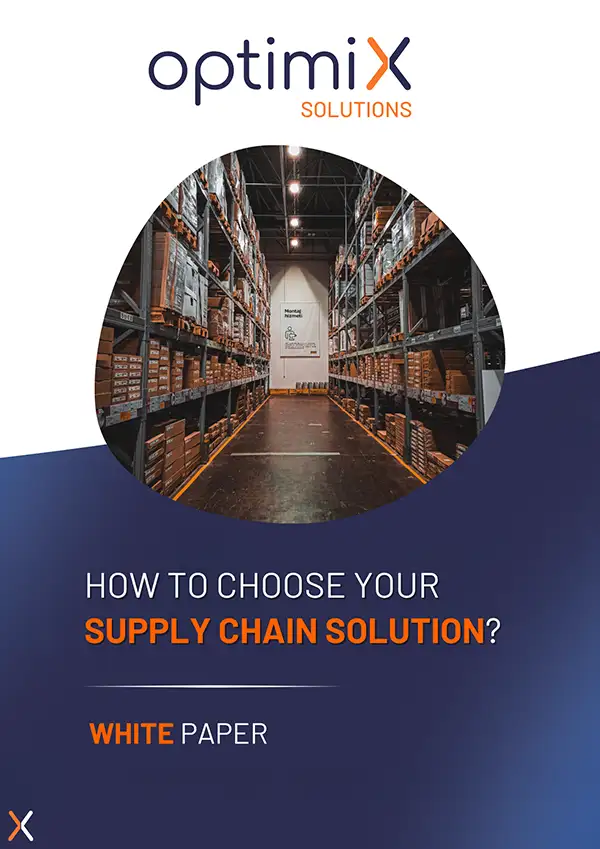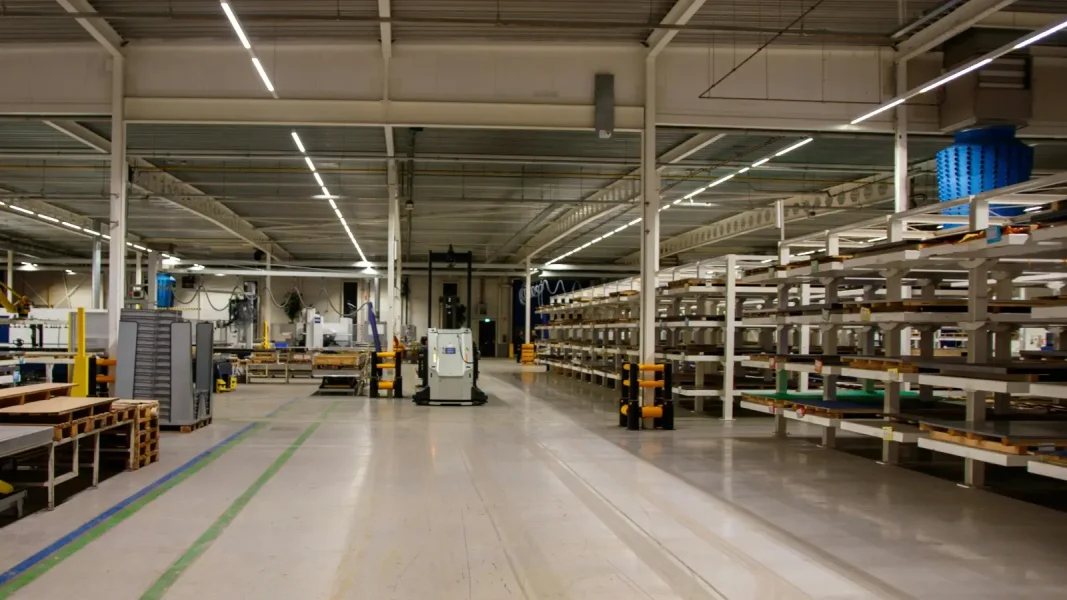In the complex world of retailing, where the dynamics of supply and demand are constantly changing, close cooperation between sales strategy and supply chain management is more than just an operational necessity – it’s a strategic imperative. strategic imperative.
Supply chain managers often face a unique challenge: Effectively aligning their operations with the company’s business vision to ensure accurate planning and reliable sales forecasts.
However, this symbiosis between commerce and the Supply Chain often remains delicate, relying more on interpersonal relationships than on industrialized processes.
How can we transcend this dependence on the goodwill of each person to create a solid and productive alliance between these two essential pillars of the company?
It is this crucial question that we will address in this article, exploring innovative ways to strengthen commerce-Supply collaboration and offering practical insights for successful alignment, a source of resilience and success.
Essential foundations for commerce and supply chain collaboration
In a context of globalization, with increasingly high customer expectations and increasingly intense competition, achieving business development objectives represents a constant challenge for managers.
Given the limited room for maneuver over the evolution of their external environment, does the survival of companies not depend above all on their ability to act internally to positively influence their impact on the outside?
From this perspective, optimizing supply chain management and ensuring its alignment with corporate strategy become important levers for gaining competitive advantage.
Thus, the secret of the company’s competitive advantage lies in its internal strategic coherence: the harmony between its strategy, its organization and the efficient use of its resources is manifested through optimal management of operations and the chain. supply.
Within the supply chain, collaboration between commerce and supply chain teams is more than an operational necessity. It becomes the driving force of effective forecasting. This collaboration is based on a deep understanding of the forecasting process, fueled by two distinct streams that interact in a complementary manner. These flows, namely:
- the contract flow oriented towards commercial negotiation,
- the coordination-driven supply flow.
Commerce and supply chain together form an essential alliance for advance planning and maximization of service rate.
The exchange of information between commerce and the supply chain goes beyond simple figures, integrating qualitative elements. These rich information exchanges contribute to a more holistic forecast that takes into account elements such as promotionssometimes known to the sales department but neglected by the sales administration department integrated into the supply chain.
Impacts on forecasting and planning
By creating close collaboration between the teams responsible for commercial strategy and those of the Supply Chain, companies inaugurate an essential strategic partnership to accurately anticipate changes in demand. This collaboration transcends organizational silos, promoting fluid communication and a shared understanding of objectives. As a result, businesses are better equipped to respond proactively to changes in market demand.
This strategic alignment provides a holistic view of upcoming business initiatives, such as promotions and product launches. By integrating sales planning into the Supply Chain process, teams can anticipate demand peaks generated by promotional campaigns or new products. This anticipation allows production levels to be adjusted accordingly, thus avoiding the risks of overproduction or product shortages.
At the heart of operational planning is the co-creation of forecasting, a dynamic where business and supply chain merge their skills to accurately anticipate customer needs. Far from being a simple anticipation, the forecast becomes the result of a common definition of the expectations of each department, thus marking the start of a strategic collaboration.
The co-creation of the forecast materializes through a shared understanding of the objectives. Commerce, as the central actor of the collaboration, deploys its negotiation skills, while the supply chain positions itself as leader between the operators and suppliers.
This dynamic aims at an ambitious objective: maximizing the service rate, an operational imperative which requires seamless collaboration. The quality of the forecast is linked to the sizing of the means of production. It thus reinforces the strategic importance of collaboration between commerce and the supply chain.
In addition, the close collaboration between commerce and the Supply Chain allows for a better understanding of market trends. By sharing real-time insights into consumer behaviors, ROI from past promotions, and competitive developments, teams can dynamically adjust their forecasts. This increased adaptability translates into more precise planning of inventory and production capacity optimizations, reducing the inefficiencies associated with static planning.
Strategic alignment thus offers the ability to transform commercial information into operational actions. Supply Chain teams can adjust planning based on real-time information, minimizing costs related to variations in demand. This optimized synchronization creates a delicate balance between operational responsiveness and strategic forecasting, contributing to more efficient inventory management and agile adaptation to market dynamics.
Ultimately, this close collaboration is a major key to achieving more precise planning and production levels, strengthening the company’s competitiveness and resilience in the dynamic retail environment.
The crucial role of this collaboration in inventory management
A thorough understanding of business objectives provides the foundation for optimal inventory management. By integrating these objectives into supply chain planning, companies can set optimal inventory levels, wisely balancing the need to meet market demand while avoiding costly excess or damaging stock-outs.
Adjusting inventory levels based on demand forecasts, seasons and market trends becomes possible through this strategic synchronization. By anticipating seasonal fluctuations, product launches or promotional events, the Supply Chain can modulate its inventory to match market requirements. This proactive adaptation helps optimize the product life cycle, thereby minimizing the risk of excessive inventory holding, depreciation and unnecessary storage costs.
A crucial aspect of this synchronization is the ability to anticipate market developments. By understanding emerging trends and adjusting inventory levels accordingly, businesses can avoid the inefficiencies associated with out-of-sync inventory management. Unnecessary surpluses are thus reduced, as are the costs associated with storing and managing surpluses. Similarly, by avoiding stock-outs, companies maintain customer satisfaction and preserve their reputation.
Direct consequence of this collaboration: Cost reduction and optimization of resources
Strategic alignment between business strategy and Supply Chain goes beyond simple coordination of activities; it provides a crucial opportunity to streamline operations, reduce costs and optimize resource utilization. By fully understanding business objectives, Supply Chain can make meaningful adjustments to its operational processes, eliminating unnecessary waste and creating increased operational efficiency.
This proactive approach helps minimize costs linked to overproduction, by adjusting production volumes based on actual demand rather than static forecasts. By reducing unnecessary excess, companies not only avoid additional storage costs, but they also preserve product value by limiting their exposure to depreciation.
Likewise, strategic alignment offers the opportunity to streamline workflows within the Supply Chain. By understanding business objectives and priorities, operational processes can be adapted to avoid redundancies, reduce downtime and accelerate production throughput. This overall optimization of operations helps eliminate unnecessary costs associated with inefficient processes.
Synchronizing production and distribution activities with actual demand also offers considerable financial benefits. By adjusting production cycles based on fluctuations in demand, companies can better allocate resources, avoiding costs associated with downtime and delays. By reducing lead times between production and delivery, temporary storage costs are reduced and responsiveness to market needs is improved.
Ultimately, this strategic alignment enables more judicious use of available resources, reducing unnecessary operational costs and improving overall supply chain efficiency. By taking a proactive approach focused on business objectives, companies can not only minimize unnecessary expenses, but also strengthen their operational agility to better respond to market fluctuations and changing consumer demands.
The concrete benefits of strategic alignment
A. Improved flexibility in the face of market changes
The strategic alignment between sales strategy and supply chain ensures greater flexibility in the face of market changes. By fully understanding business objectives and initiatives, the Supply Chain can quickly adjust its operational plans to respond to sudden shifts in demand, changing trends or economic fluctuations.
This operational agility allows companies to quickly adapt to new market realities, thereby avoiding costly overstocks or damaging stock-outs.
Improved flexibility also promotes optimal responsiveness to emerging opportunities, thereby strengthening the company’s competitiveness in an ever-changing business environment.
B. Strengthening operational resilience
Strategic alignment is an essential pillar for strengthening the operational resilience of the company. By integrating business planning into operational management, companies can anticipate and mitigate potential risks.
The ability to quickly adjust inventory levels, reallocate resources and reorganize logistics flows in response to external disruptions or crises allows the company to maintain operations smoothly, even in difficult conditions.
A resilient Supply Chain ensures business continuity, minimizes costs related to interruptions and builds trust among partners and customers.
C. Maximizing customer satisfaction and loyalty
Strategic alignment directly contributes to maximizing customer satisfaction and loyalty. By thoroughly understanding market expectations, the Supply Chain can ensure constant product availability, avoiding stock-outs that could frustrate customers.
Reduced delivery times and optimal management of stock levels guarantee a positive customer experience, strengthening brand loyalty.
What’s more, close coordination between sales and the supply chain enables us to anticipate specific customer requests, personalize offers and adjust service levels, thus creating solid, lasting customer relationships.
This maximization of customer satisfaction inevitably results in increased loyalty, consolidating the company’s position in the market and generating long-term economic benefits.
----------------------------
Collaboration between commerce and supply chain is not just an operational imperative, but a strategic path to the future of supply chain.
The constant exchange of information, mutual understanding of processes and alignment of objectives form the basis of successful collaboration.
By positioning commerce-supply chain collaboration as a critical driver of operational performance, companies can not only respond to today’s challenges but also anticipate and thrive in the supply chain’s complexities to come.
Thus, collaboration becomes much more than a functional necessity. It becomes a strategic vision that propels the company to new heights in the dynamic world of supply chain.









